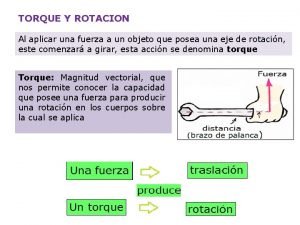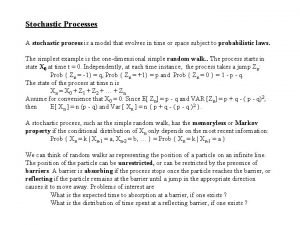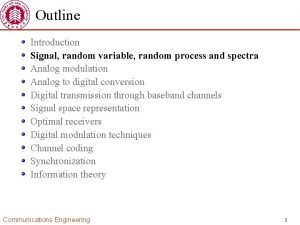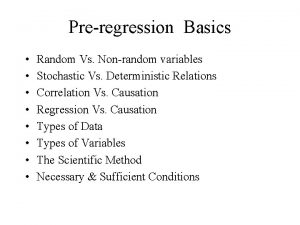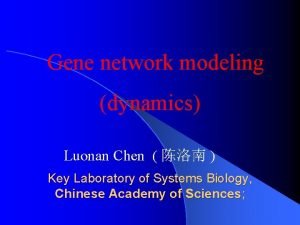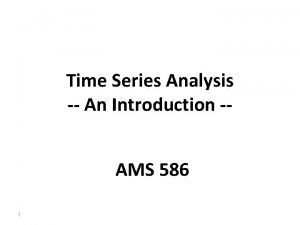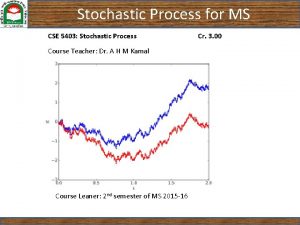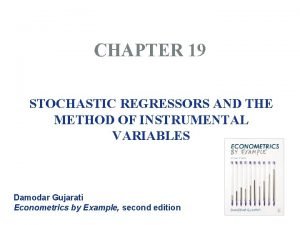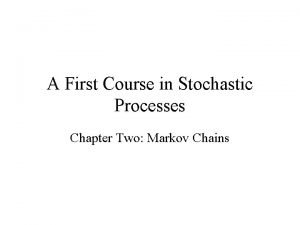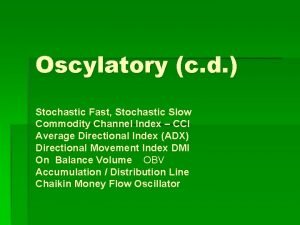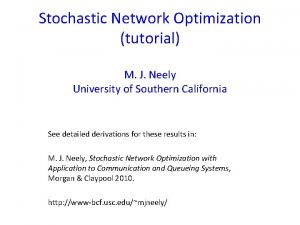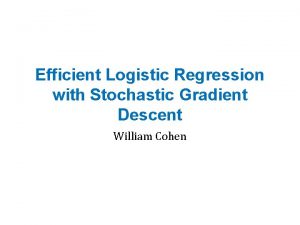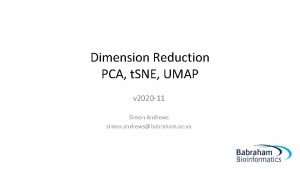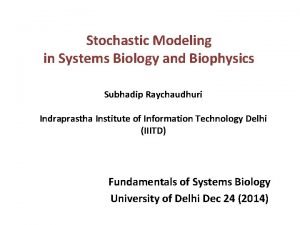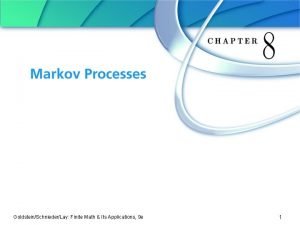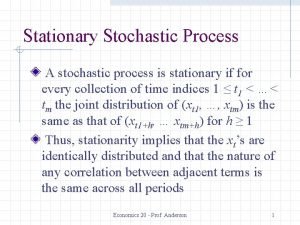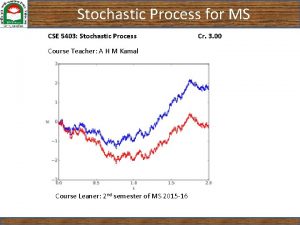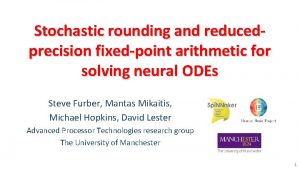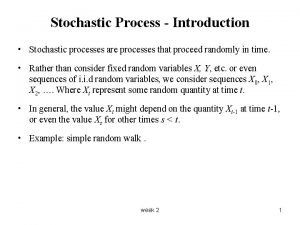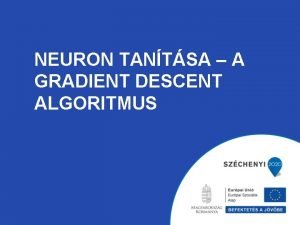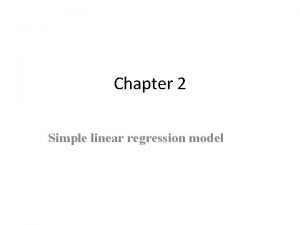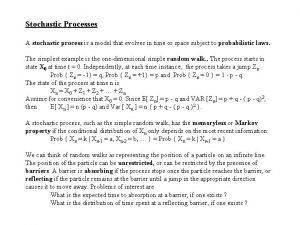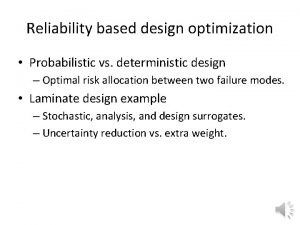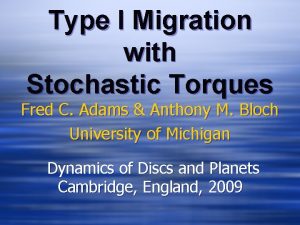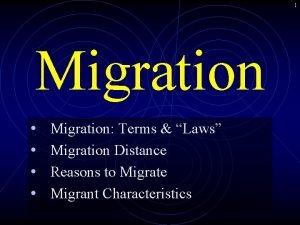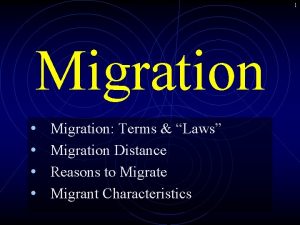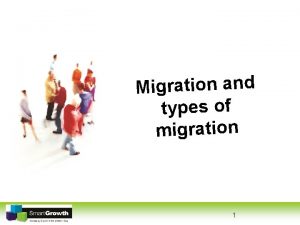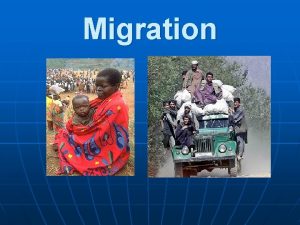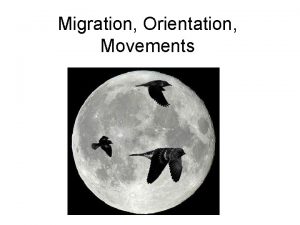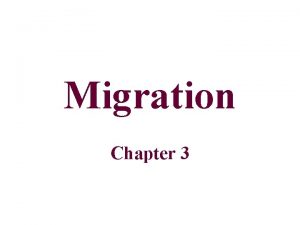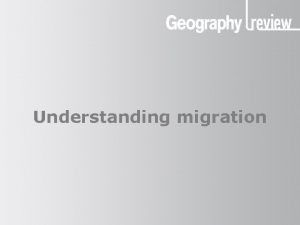Type I Migration with Stochastic Torques Fred C




























- Slides: 28

Type I Migration with Stochastic Torques Fred C. Adams & Anthony M. Bloch University of Michigan Dynamics of Discs and Planets Cambridge, England, 2009

OUTLINE w The Type I Migration Problem w Solution via Turbulent Torques w Fokker-Planck Formulation w Effects of Outer Disk Edge w Effects of Initial Planetary Locations w Long Term Evolution (eigenfunctions) w Time Dependent Torques

Previous Work w Nelson & Papaloizou 2004: numerical w Laughlin, Adams, Steinacker 2004: basic numerical + back-of-envelope w Nelson 2005+: longer term numerical w Johnson, Goodman, Menou 2006: Fokker-Planck treatment This work: Effects of outer disk edge, long time evolution, time dependent forcing terms, predict survival rates…

Type I Planetary Migration Planet embedded in gaseous disk creates spiral wakes. Leading wake pushes the planet outwards to larger semimajor axis, while trailing wake pulls back on the planet and makes the orbit decay. The planet migrates inward or outward depending on distribution of mass within the disk. (Ward 1997)

Net Type I Migration Torque (Ward 1997; 3 D by Tanaka et al. 2002)

Type I Migration Problem For typical parameters, the Type I migration time scale is about 0. 03 Myr (0. 75 Myr) for planetary cores starting at radius 1 AU (5 AU). We need some mechanism to save the cores…

MRI-induced turbulence enforces order-unity surface density fluctuations in the disk. These surface density perturbations provide continuous source of stochastic gravitational torques. Turbulent Torques We can use results of MHD simulation to set amplitude for fluctuations of angular momentum acting on planets (LSA 04, NP 04, & Nelson 2005) Turbulence -> stochastic torques -> random walk -> outward movement -> some cores saved

Working Analytic Model for Characterizing MHD Turbulence MHD instabilities lead to surface density variations in the disk. The gravitational forces from these surface density perturbations produce torques on any nearby planets. To study how this process works, we can characterize the MHD turbulent fluctuations using the following basic of heuristic potential functions: (LSA 2004)

Estimate for Amplitude due to Turbulent Fluctuations see also Laughlin et al. (2004), Nelson (2005), Johnson et al. (200

Power-Law Disks

FOKKER-PLANCK EQUATION

FOKKER-PLANCK EQUATION

DIMENSIONLESS PARAMETER (depends on radius, time)

Distributions vs Time time = 0 - 5 Myr

Survival Probability vs Time (fixed diffusion constant)

Survival Probability vs Time (fixed Type I migration)

DIFFUSION COMPROMISE w If diffusion constant is too small, then planetary cores are accreted, and the Type I migration problem is not solved w If diffusion constant is too large, then the random walk leads to large radial excursions, and cores are also accreted w Solution required an intermediate value of the diffusion constant

Optimization of Diffusion Constant time=1, 3, 5, 10, 20 Myr

Survival Probability vs Starting Radial Location time=1, 3, 5, 10 Myr

Distributions in Long Time Limit time=10 - 50 Myr Only the lowest order eigenfunction survives in the asymptotic (large t) limit

Lowest Order Eigenfunctions Surviving planets live in the outer disk…

Time Varying Torques

Survival Probability with Time Varying Surface Density

Survival � Survival Probability with Time Varying Mass and Torques

SUMMARY w Stochastic migration saves planetary cores w Survival probability ‘predicted’ 10 percent w Outer boundary condition important -disk edge acts to reduce survival fraction w Starting condition important -- balance between diffusion and Type I torques w Optimization of diffusion constant w Long time limit -- lowest eigenfunction w Time dependence of torques and masses

UNRESOLVED ISSUES w Dead zones (turn off MRI, turbulence) w Disk structure (planet traps) w Outer boundary condition w Inner boundary condition (X-point) w Fluctuation distrib. (tails & black swans) w Competition with other mechanisms (see previous talks…)

Reference F. C. Adams and A. M. Bloch (2008): General Analysis of Type I Planetary Migration with Stochastic Perturbations, Ap. J, 701, 1381 fca@umich. edu

 Momento horario y antihorario
Momento horario y antihorario Paralela al brazo de palanca
Paralela al brazo de palanca Stochastic process model
Stochastic process model Stochastic processes
Stochastic processes Discrete variable
Discrete variable Stochastic gradient langevin dynamics
Stochastic gradient langevin dynamics What is the component of time series
What is the component of time series Stochastic vs dynamic
Stochastic vs dynamic Stochastic calculus
Stochastic calculus Stochastic process
Stochastic process Stochastic regressors
Stochastic regressors A first course in stochastic processes
A first course in stochastic processes Stochastic slow
Stochastic slow Divbar
Divbar Guided, stochastic model-based gui testing of android apps
Guided, stochastic model-based gui testing of android apps Logistic regression stochastic gradient descent
Logistic regression stochastic gradient descent Umap perplexity
Umap perplexity Stochastic vs probabilistic
Stochastic vs probabilistic Stochastic matrix
Stochastic matrix Stationary stochastic process
Stationary stochastic process Stochastic process
Stochastic process Stochastic rounding
Stochastic rounding Stochastic process introduction
Stochastic process introduction Stochastic gradient descent
Stochastic gradient descent Sample regression function
Sample regression function Stochastic inventory model example
Stochastic inventory model example Stochastic process modeling
Stochastic process modeling System identification
System identification Stochastic vs probabilistic
Stochastic vs probabilistic

